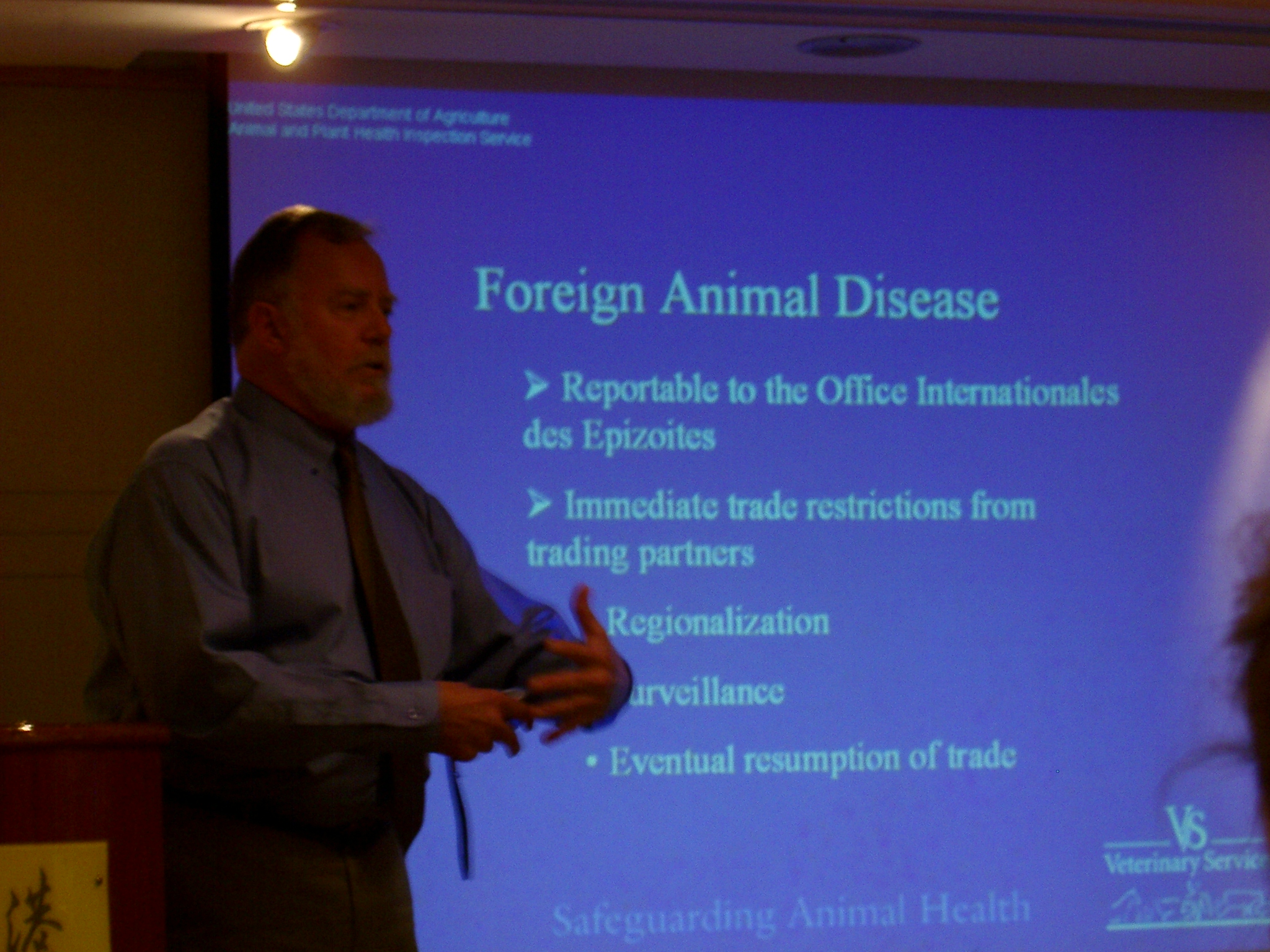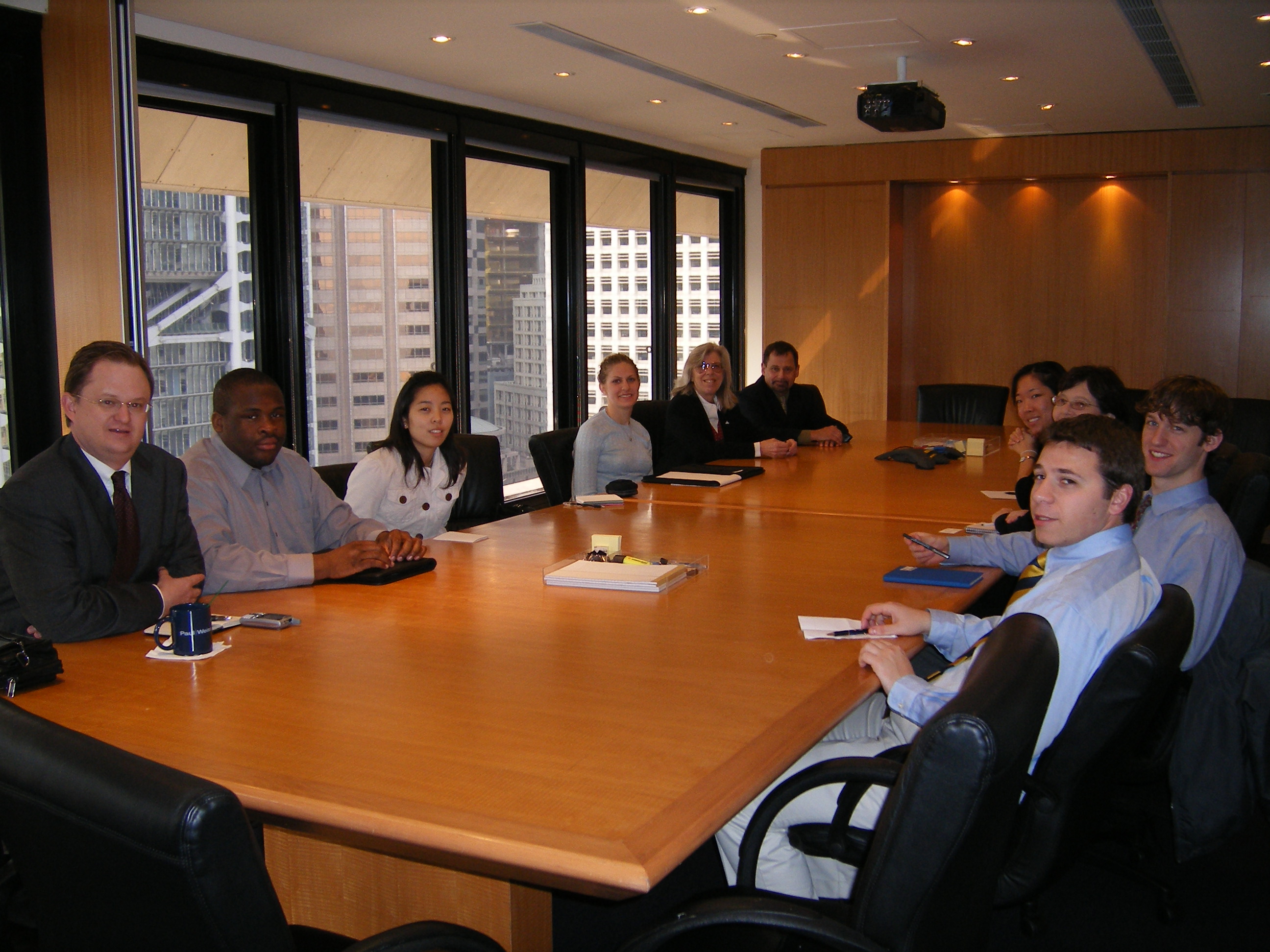Today, we woke up bright and early to leave at 8:30 AM for the Shenzhen Stock Exchange. After a little over an hour, we arrived at the border between Hong Kong and China and had to go through security and passport checks. Then, we were off to the Shenzhen Stock Exchange where we heard speaker, Karon Li, discuss the future of the exchange, its rules and standards, and its growth. After visiting the exchange, we went to a beautiful restaurant for lunch, where we enjoyed more Chinese authentic foods and dishes. The next part of the day was spent touring Wah Ming Optical Manufactory Ltd., which is a factory that manufactures largely sunglasses and optical products. Douglas Cheung, the director of the factory, provided interesting insight on what it’s like to keep up-to-date and remain innovative in the optical industry. Lastly, to end the week of business-related activities, we met with educators from the Nanshan Foreign Language School in Shenzhen, Nanshan being one of the sixth districts in Shenzhen with the most emphasis on technology and education. Liu Genping and Shana Wang, Vice Director and Director of the Shenzhen Nanshan Education Bureau took us on a tour of the Adult Education Training Facilicites. The finale of the day was a beautiful banquet that had succulent meats, vegetables, and desert dishes, and most importantly, wine and alcohol to toast to the Robert H. Smith School of Business and its fabulous honor students.
A busy street in Shenzhen
While at the Shenzhen Stock Exchange, our host, Karon Li, started our meeting by giving us an overview and brief history of the exchange. The exchange was officially set up by the Chinese Government in 1990. After a brief period of excitement and prosperity in the market, riots in the summer of 1992 (citizens felt cheated out of opportunity to subscribe to a hot issue) brought about new legislation and change by the government such as IPO lotteries. When the mainland stock market was initially set up, a company’s equity capital structure would typically consist of 1/3 A-shares (Publicly floated to domestic individual investors), 1/3 LP shares (Non-tradable, only can be owned by legal persons, usually SOE’s) and finally, 1/3 state owned shares (Also non-tradable).
The Smith contingency at the Shenzhen Stock Exchange
Currently, China’s stock market consists of two exchanges, one in Shenzhen and one located in Shanghai. The Shanghai Stock Exchange handles the listing of large companies (50 million shares and over), while the Shenzhen exchange handles the smaller listings and an over-the-counter market for delisted companies. One of the major issues concerning the Chinese stock market is non-tradable share reform. The goal of this reform is to make 100% of the shares on the market fully liquid and tradable. Two issues have resulted from the reforms: First, all new IPO’s have been halted in the mainland and second, majority shareholders have been struggling to find just compensation to minority shareholders in the transfer of non-tradable shares. Li also discussed the change in the standards of listing due to the SME (Small and Medium Enterprise) Board founded in June, 2004. Today, 50 companies are listed on the SME. Other measures have been taken to initiate growth and change for the SZSE. In the future, directors of the SZSE are trying to persuade a historically conservative Chinese government to allow derivative trading for portfolio insurance to hedge risk. Also, a future suggestion for the SZSE is to attract more companies by lowering their listing requirements to be more disclosure and less merit-based. In other words, companies would not have to have 3 years of earnings and profit data to be able to list, but would only need to show adequate financial statements that disclose their company profitability and growth. In line with this attitude, a new law was made that companies only need to have $30 million share capital as opposed to $50 million. As a result, more companies are finding it easier to list on the exchange, which makes the mainland exchanges more competitive with their overseas counterparts. Currently, the gross market cap for the SZSE is $117 billion, the average price to earnings ration is 17, and there are 35 million investors. Other major topics covered in today’s meeting were the illiquidity failure of the B-Share market, improved corporate governance, and the impact of returnees on the Chinese Securities Regulatory Commission and the future of China’s market.
Our Host Poses with Professor Hutchens
The SZSE Building
Â
After learning about the Shenzhen Stock Exchange, we went to a fancy Shenzhen restaurant, Huan Yu, for lunch. It was a beautiful place that seats over 1,000 customers at a time. The food was wonderful and included shrimp, chicken, beef, and rice cake desert, among other dishes. Overall, it was the third best Chinese dining experience in Hong Kong, only finishing after the food from Thursday and Friday nights.
The food was AMAZING!!!
Smith Students at Lunch
Huan Yu’s Massive Serving Capacity
Â
Â
The Wah Ming Optical Manufactory Ltd. was the next stop on our agenda. Douglas Cheung, director of the optical factory, took us on a tour too see how sunglasses are made and to discuss how he manages his workers and keeps his products innovative. The factory, set up in 1968, employs 3,300 workers, the majority of whom originate from Hong Kong. Hong Kong supplies Wah Ming with an abundance of sales persons, marketing managers, engineers, and designers that are not available in China, due to the competition for labor that manufacturing companies face. Recently, the minimum monthly wage has been increased from 480 RMB to 580 RMB, which is about $60 to $72.50 per month. The dormitory facilities, food, and utilities that the workers receive provide them with incentives to work at Wah Ming, and it seems as if the workers are like one, big family. In regards the workers, the average age of production personnel ranges between 18 to 26 years old. The age is a little older for the engineers and designers who are usually university educated and make higher wages. The final class of workers mentioned is the line managers who typically are in there forties. The factory promotes efficiency by using state of the art technology and using Six Sigma principles. In addition, efficiency is measured through the monitoring of a daily quota for various production lines. In the cases where the quota is missed, that particular production department would have to work overtime to get back on schedule. On our tour around his beautiful facility, Mr. Cheung mentioned the use of landscaping (using plants and creating hillsides) and various recreational activities such as basketball leagues to make the workers feel more comfortable at the factory. In order to keep ahead of the game, the company is constantly coming up with new prototypes for the market in case some of their current products are copied by other manufacturers. Since competition is fierce, Wah Ming needs the top engineers and designers to make prototypes, handle computer graphics, and make molds for new sunglass models. On average, 500,000 pieces are made per day, with a capacity of 8 million pieces per day. Thus, Wah Ming has a lot of opportunity for growth, especially with a newly built factory addition to its already booming manufacturing business. According to Douglas Cheung, the biggest challenges for a company are to remain dedicated to your goals, set priorities and attack problems by order of importance, be passionate about your work, and enjoy what you do. Visiting the factory was eye-opening and educational in learning about what it takes to run and operate a business, how to keep ahead of the industry, and how to conquer challenges that arise in the workplace. For being the ripe age of 25, Cheung looks poised to maintain and even expand the success of his manufacturing operations.
Smith Students at Wah Ming Optical
Mr. Cheung takes us through his facility
Â
Â
Â
Â
Davian presents a gift to Mr. Cheung
To end the week of educational business ventures and delicious food, we met with Directors Liu Genping and Shana Wang of the Nanshan Foreign Language School in Shenzhen to discuss possible future programs with the R.H. Smith School of Business. The school has wonderful facilities and programs for their students to learn other languages, as well as travel to different countries. The school focuses on foreign languages, as well as music, art, and computer learning.
Imortant meeting between Shenzhen and the Smith School
Art featured at the Nanshan Facility
More Food!!!
After touring the Nanshan Adult Education Training Center facilities, we had our dinner banquet to end the day. The food was amazing, including tofu, meat dishes, and snail. Surprisingly, most people ate the snail. There were multiple toasts to the Nanshan directors for hosting us, and to the wonderful R.H. Smith School faculty and students. Visiting China was a great experience and allowed us to see the different culture and lifestyle in Shenzhen, and embrace their way of life and especially, their food!


Â
Â
Â




